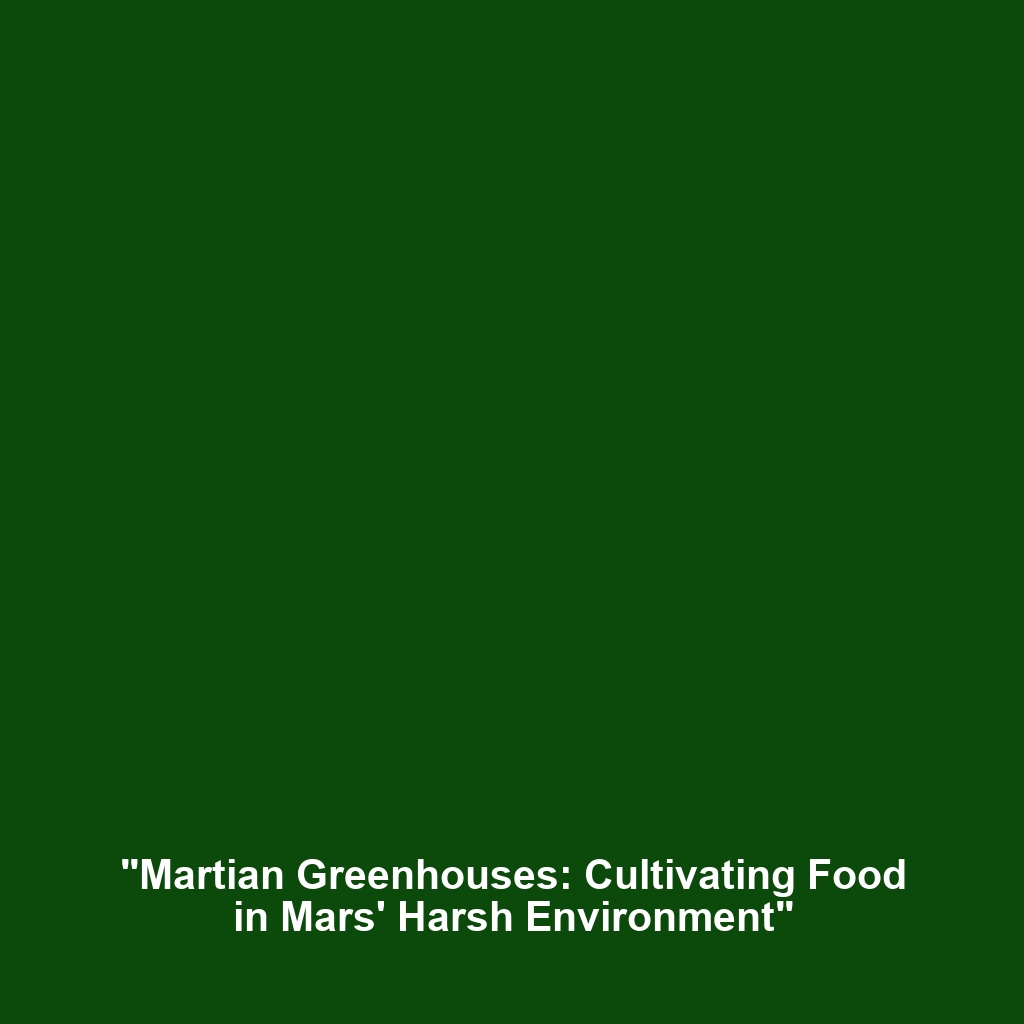Martian Greenhouses: Designing Enclosed Systems for Food Cultivation in Mars’ Environment
Introduction
The concept of Martian greenhouses is pivotal in the ongoing endeavor to colonize Mars. As humanity seeks to establish a permanent presence on the Red Planet, the design of enclosed systems for food cultivation becomes essential. These greenhouses are not merely experiments; they represent a critical solution to the challenges posed by Mars’ harsh environment, providing a sustainable method for food production that could support human life in extraterrestrial settings. This article delves into the intricate designs and significance of Martian greenhouses while exploring their role in the larger picture of colonization efforts.
Key Concepts
Understanding Martian greenhouses requires examining several key concepts and principles:
- Controlled Environment Agriculture (CEA): Greenhouses utilize CEA techniques to create optimal growing conditions despite external Martian climates.
- Hydroponics and Aeroponics: Soil-less growing methods that are essential for efficient resource use in Martian settings.
- Life Support Systems: Integration of waste recycling and water purification to create a self-sustaining ecosystem.
These principles showcase how Martian greenhouses embody the innovations necessary for colonizing Mars, ensuring food security and sustainability.
Applications and Real-World Uses
Martian greenhouses have several significant applications related to colonizing Mars:
- Food Production: Essential for providing fresh produce to Mars colonies, enhancing the quality of life for astronauts.
- Psychological Wellbeing: Gardens can serve as therapeutic environments, contributing to mental health during long missions.
- Research Platforms: Greenhouses can facilitate studies on extraterrestrial agriculture techniques applicable to Earth.
These applications elucidate how Martian greenhouses can serve critical functions in the broader context of colonization.
Current Challenges
While the concept of Martian greenhouses is promising, several challenges and issues persist:
- Radiation Exposure: Effective shielding against harmful cosmic rays and solar radiation is essential.
- Resource Limitations: Water and energy sources must be sustainably sourced or transported from Earth.
- Technological Barriers: Developing reliable systems that can operate autonomously in Mars’ extreme conditions remains a challenge.
Future Research and Innovations
Looking ahead, various innovations and research initiatives could significantly impact the efficacy of Martian greenhouses:
- Genetically Engineered Crops: Developing plants optimized for growth in Martian soil and atmosphere.
- Advanced Materials: Utilizing innovative materials for greenhouse construction to enhance durability and insulation.
- AI and Robotics: Implementing smart systems for monitoring and managing greenhouse environments.
Such breakthroughs may one day transform the Martian landscape into a more hospitable environment for human habitation.
Conclusion
In summary, Martian greenhouses play a fundamental role in developing enclosed systems for food cultivation on the Red Planet, essential for the success of colonizing Mars. By addressing food security, environmental challenges, and human well-being, these systems are key to establishing sustainable human presence beyond Earth. The journey toward colonization is ongoing, and further research in this area is crucial. For more insights into colonization techniques, consider exploring innovative space agriculture methods and habitat designs for extraterrestrial life.


